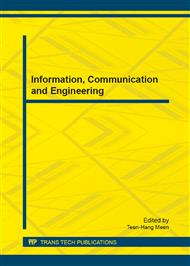p.375
p.380
p.386
p.392
p.398
p.404
p.413
p.419
p.424
Strategy of Green Design on Intelligent Energy-Saving Product under Eco-Design Requirements for Energy-Using Product (EuP)
Abstract:
With the threat of global warming nowadays in the 21st century, the European Union has set the standard “Eco-Design Requirements for Energy-using Product(EuP)” for controlling the development of consumptive electronic machinery and products. Therefore, the trend of green design sees the instruction of EuP as the main direction for energy-saving. Considering the factors, undergoing the comprehensive evaluation and development process, the industry needs to draw up the corresponding design strategy in response to the new situation. Therefore, to optimize the green design strategy, the designers can replace hardware with the intelligent system to develop more optimal energy-saving products. Following the ecological instructions of energy-saving of EuP as direction, this study combined the advantage of the intelligent system and green design in order to optimize strategy of green design on intelligent energy-saving product under eco-design requirements for energy-using product (EuP). The evaluation factors were included in the strategies of intelligent energy-saving product design by analyzing the product users’ cognition, needs, habit and etc. Furthermore, through the Fuzzy Analytic Hierarchy Process (FAHP), the priority and the important factors of green design were analyzed. By examining the green design strategy on energy-using product, industry needs to think the energy-saving conditions and the key factors on deciding process. Eventually, the efficiency of product design for environment can be fulfilled successfully.
Info:
Periodical:
Pages:
398-403
Citation:
Online since:
February 2013
Authors:
Price:
Сopyright:
© 2013 Trans Tech Publications Ltd. All Rights Reserved
Share:
Citation:


